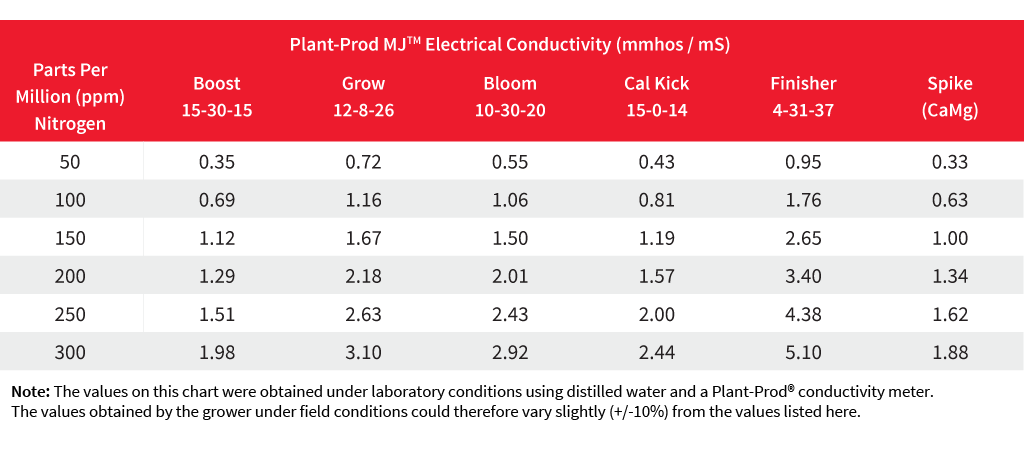How do I calculate fertilizer rates? Part-1
Did you know just as with pH, each type of plant has a preferred Electrical conductivity (EC) range within which it can thrive? In general, though, if your EC is very low, your plant probably doesn’t have enough food. On the other hand, if your EC is very high, you run the risk of burning your roots or creating toxic buildups.
All plants need the right amount of food (nutrients) in order to grow. Electrical conductivity (EC) is an essential measurement that indicates the total amount of nutrients available to your plants.
When nutrients dissolve in water, they split into ions. For example, potassium nitrate dissolves into a potassium ion and a nitrate ion. Each ion carries an electrical charge, which creates the potential for electricity to move through a solution. The more ions present, the better the water can conduct electricity.
Plants only absorb nutrients when they are available in an ionic form. That’s why EC is a good indication of the overall strength of your nutrient solution.
Electrical Conductivity & Fertilizer Concentration
Regular monitoring of the electrical conductivity (EC) of your nutrient solution is a vital part of any fertigation program. Electrical conductivity is the ability of a solution to conduct an electrical current. Most elements (plant essential or other) that are soluble in water will contribute to the conductivity of water or a nutrient solution. As a result, the EC of a nutrient solution will increase as the water-soluble fertilizer concentration in the solution is increased. By knowing the EC of a water-soluble fertilizer solution, you can predict the parts per million (ppm) of nutrients your plants are receiving, or that remain in your runoff water.
Each water-soluble fertilizer blend has a unique EC profile based on its concentration in solution due to the composition of the product. The following chart can be used to relate the EC of your Plant-Prod MJ TM nutrient feed with the associated parts per million (ppm) of Nitrogen:

Measuring EC
Most meters used by our growers are calibrated in mmhos per cm or mS per cm, which are interchangeable units. The data given here on our water-soluble fertilizers use the same measurement. The above table can be used to measure the accuracy of water-soluble fertilizer injector systems by following these steps:

Example:
- Conductivity of clear irrigation water is 0.60 mmhos / mS
- Conductivity of the final fertilizer solution using 10-30-20 is 2.05 mmhos / mS
- The conductivity due to the fertilizer is 2.05 mmhos / mS – 0.60 mmhos /mS = 1.45 mmhos / mS
- For 10-30-20, a conductivity reading of 1.45 mmhos / mS corresponds to a feeding rate of roughly 150 ppm of Nitrogen (N)
Stay tuned for our next post where we will cover the link between parts per million (ppm) of Nitrogen and mixing rates.
Want to cut your fertilizer costs and increase grower profitability?
Learn how high-quality fertilizers can help you cut fertilizer costs, and labour costs and increase your growing productivity here.
For more fertilizer productivity tips, check out these blog posts:
- How Do You Check Your Fertilizer’s Quality?
- Can You Tank Mix Water Soluble Fertilizers? Pros, Cons & 5 Tips
- How Do I Know If My Plants Need Calcium?
Plant-Prod manufactures water-soluble fertilizers for fruit trees, plants and flowers. The choice of growers from California to Maine for over 70 years, Plant-Prod fertilizers are made from the finest raw ingredients in the world, tested constantly for purity and turbo-milled to ensure 100% solubility in order to help you improve yields while cutting fertilizer costs. Click here to find a Plant-Prod fertilizer supplier near you.
